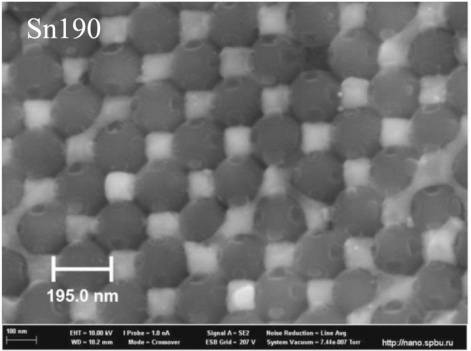Scientists synthesized a Type-1.5 superconductor
5 November 2019 г.

Superconductivity, or the ability of a material to conduct an electric current without loss, is destroyed by a magnetic field. Two types of superconductors are known in experimental physics – Type I which is resistant only to weak magnetic fields, and Type-II, which retains its properties at stronger magnetic fields. The theory makes scientists believe in the existence of an intermediate, Type-1.5 superconductor.
A team of scientists from Russia, including researchers of the Krasnoyarsk Science Center SB RAS, obtained a compound which behaves in accordance with the characteristics predicted for the Type-1.5 superconductor. Unusual superconductors were synthesized from "bubbles" of silicon oxide with tiny voids filled with molten tin. Initially, the researchers were attracted by an unusual property of tin - its ability to change the type of superconductivity, depending on the particle size. The physicists suggested that owing to this property, it is possible to obtain superconductors both of Type I and Type II based on silicon opal and tin.
In fact, everything turned out to be much more unusual. Samples of the material with large pores and large tin nanoparticles, about a hundred nanometers in diameter, were Type-I superconductors. But the scientists also obtained a compound of another type, which seemed to be in an intermediate state between the Type I and Type II of superconductivity. If the sample with small pores has a “mixture” of large and small tin nanoparticles, it starts to exhibit magnetic characteristics predicted for Type-1,5 superconductors. For example, magnetic vortices penetrating Type-1,5 superconductors are distributed unevenly due to the fact that they are not only repelled from each other, but also attracted to each other.
Another feature of the obtained superconductors appears to be their ordered porous structure and weak coupling between superconducting nanoparticles. In the samples, superconducting tin elements were located between the opal “bubbles” and were coupled by thin bridges, leading to a weak and easily destroyed coupling between them. Due to this peculiarity, superconductivity in the synthesized material can be destroyed not only due to the electromagnetic field, but also due to the elementary particles such as photons, electrons etc. “hitting” the superconductor.
Such features of new superconductors allow us to apply them in radio electronic devices. They can detect the slightest changes in the magnetic field and low-frequency waves, a property which can be used, for example, for underwater communication. Moreover, the obtained superconductors can be used in charged particle detectors.
“If there is a weak coupling superconductor, it is enough to direct a particle onto the sample, for example, a photon for superconductivity to be destroyed for a short time. This allows using the superconductors as single detectors for photons or other elements. Moreover, it is possible to choose and set such parameters that the superconductors respond only to certain particles. This will make it possible to apply them as detectors for catching particles in accelerators such as the Large Hadron Collider, ”says one of the authors of the study, Denis Gokhfeld, Candidate of Physical and Mathematical Sciences, senior research associate at the L.V. Kirensky Institute of Physics KSC SB RAS.
This study was supported by the Russian Foundation for Basic Research.
Share:
